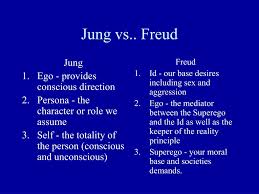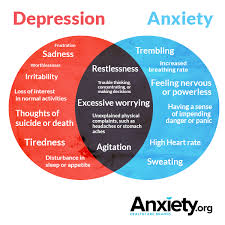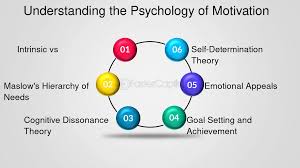In today’s competitive world, building a strong brand identity is crucial for businesses looking to differentiate themselves from their competitors and establish a loyal customer base. Whether you are launching a new startup or rebranding an established company, creating a solid and cohesive brand identity is the first step towards ensuring your business stands out in the marketplace. This guide will walk you through the essential steps involved in building a successful brand identity from scratch.
What is Brand Identity?
Brand identity is the visual, emotional, and cultural representation of your business. It encompasses everything from your logo, colors, and fonts to your messaging, voice, and the feelings it evokes in your audience. Your brand identity should reflect who you are as a company, what you stand for, and what makes you different from others. A well-crafted brand identity helps customers understand your values, builds trust, and fosters long-term relationships.
Why is Brand Identity Important?
Building a brand identity is vital for several reasons:
- Differentiation: In a crowded market, brand identity helps you stand out. It gives your business a unique presence and voice that attracts and resonates with your target audience.
- Recognition: A strong brand identity makes it easier for people to recognize and remember your business. When done right, people can identify your brand just by looking at your logo, color palette, or fonts.
- Trust: Consistency in brand identity builds trust. Customers are more likely to purchase from brands they recognize and trust.
- Emotional Connection: A well-defined brand identity can create an emotional connection with your audience, making them feel aligned with your values and message.
Steps to Build a Brand Identity
1. Define Your Brand’s Purpose and Values
Before diving into the visual aspects of your brand, it’s essential to define its purpose and core values. This step forms the foundation of your brand identity and should guide all your future decisions.
- Brand Purpose: What is the reason your business exists? Your brand purpose should go beyond selling products or services; it should reflect why your business matters and what problems you are solving for your customers. For example, Patagonia’s purpose is to help save the planet through environmentally friendly practices.
- Core Values: These are the principles that guide your brand’s behavior and decision-making. Values like innovation, integrity, sustainability, and customer-centricity help shape how you interact with customers and the world. Ensure your values are authentic, relevant, and aligned with your target audience’s beliefs.
2. Understand Your Target Audience
Building an effective brand identity requires understanding who your target audience is and what they want. Conduct market research to gain insights into your audience’s demographics, interests, needs, and behaviors. Understanding these aspects will help you create a brand identity that resonates with them on a deeper level.
- Demographics: Age, gender, income, education, and location all affect how your audience perceives your brand.
- Psychographics: This refers to their lifestyle, interests, values, and attitudes. Creating buyer personas can help visualize your target audience and make it easier to create tailored messaging and visuals.
- Pain Points: What challenges are your customers facing, and how can your brand solve these problems? Understanding their pain points helps position your brand as a solution.
3. Craft Your Brand’s Mission Statement
Your mission statement is a concise summary of your brand’s purpose, values, and goals. It answers the question, “Why does your brand exist?” Your mission statement should be easy to understand and inspire action. It should guide all your branding decisions, from messaging to marketing strategies.
For example, TOMS Shoes has a clear and simple mission statement: “We exist to improve lives through business.”
4. Design Your Visual Identity
Visual identity is one of the most powerful elements of brand building. It’s the first thing people notice, and it often forms the basis of their opinion about your brand. A compelling visual identity creates recognition and reinforces your brand’s personality.
- Logo: Your logo is the face of your brand. It should be simple, memorable, and versatile. A logo should convey your brand’s personality and work across different mediums, from digital to print. Consider using colors, shapes, and fonts that reflect your brand’s values and voice.
- Color Palette: Colors evoke emotions and influence how customers perceive your brand. Choose a color palette that aligns with your brand’s personality and speaks to your target audience’s emotions. For example, blue conveys trust and professionalism, while red is bold and energetic.
- Typography: The fonts you use contribute to your brand’s personality. Choose fonts that are easy to read and reflect the tone of your brand, whether it’s playful, sophisticated, or modern.
- Imagery and Graphics: The type of images and graphics you use should reinforce your brand’s message. Consistency in style, composition, and color will help build a cohesive visual identity across your website, social media, and other marketing materials.
5. Develop Your Brand’s Voice and Messaging
Your brand’s voice is how it communicates with your audience. It should reflect your brand’s personality and tone, whether it’s formal, casual, humorous, or authoritative. Brand voice should remain consistent across all touchpoints, including your website, social media, advertisements, and customer service interactions.
- Tone of Voice: Decide on the tone you want to adopt for your brand. A luxury brand might use an elegant, refined tone, while a tech startup might adopt a friendly and approachable tone.
- Messaging: Messaging refers to the core ideas you want to communicate about your brand. It should clearly express what your brand stands for and why customers should care. Your messaging should address your customers’ needs, highlight the benefits of your products or services, and differentiate you from competitors.
- Tagline: A tagline is a short phrase that encapsulates your brand’s essence. It should be memorable and easy to associate with your brand. Think of Nike’s “Just Do It” or Apple’s “Think Different.”
6. Be Consistent
Consistency is key to building a strong brand identity. Your audience should be able to recognize your brand instantly, whether they encounter it on social media, your website, or an advertisement. Consistency builds trust and ensures that your messaging and visuals align with the expectations you’ve set with your audience.
- Brand Guidelines: Create a brand style guide to ensure all your branding elements are used consistently. This guide should include specifications for your logo, color palette, typography, imagery, and messaging. It should be shared with anyone who interacts with your brand, including designers, marketers, and customer service teams.
- Cross-Channel Consistency: Ensure your brand is consistently represented across all channels, whether it’s your website, social media, email marketing, or physical storefronts. Consistency reinforces your brand identity and enhances customer recognition.
7. Build a Brand Experience
Brand identity extends beyond visuals and messaging; it encompasses the overall experience customers have with your business. Every interaction, whether it’s browsing your website, talking to customer support, or using your product, should reflect your brand’s identity.
- Customer Service: Ensure that your customer service team embodies your brand values. Friendly, helpful, and responsive service can significantly influence how customers perceive your brand.
- Packaging and Product Design: Even the packaging of your products should reflect your brand identity. High-quality, aesthetically pleasing packaging can leave a lasting impression and reinforce your brand’s personality.
- Website and User Experience: Your website should provide a seamless, enjoyable experience that reflects your brand. It should be easy to navigate, visually appealing, and aligned with your brand’s values.
8. Evolve Your Brand Identity
Brand identities are not static. Over time, you may need to evolve your brand to stay relevant in a changing market or appeal to new customer segments. Rebranding, when done strategically, can breathe new life into your business and help you maintain a competitive edge.
Rebranding could involve redesigning your logo, updating your messaging, or redefining your brand values to align with evolving customer expectations. However, any changes should be made thoughtfully and with your target audience in mind.
Conclusion
Building a brand identity is an ongoing process that requires careful planning, consistency, and a deep understanding of your target audience. A strong brand identity goes beyond just logos and colors—it’s about creating a cohesive and memorable experience that resonates with your customers. By defining your brand’s purpose, understanding your audience, creating a visual identity, and maintaining consistency, you can build a brand that stands out and fosters long-term success.
Remember, your brand identity should evolve with time and market trends, but it should always remain true to your core values and mission. By doing so, you’ll create a brand that not only attracts attention but also builds trust and loyalty among your customers.
4o mini




